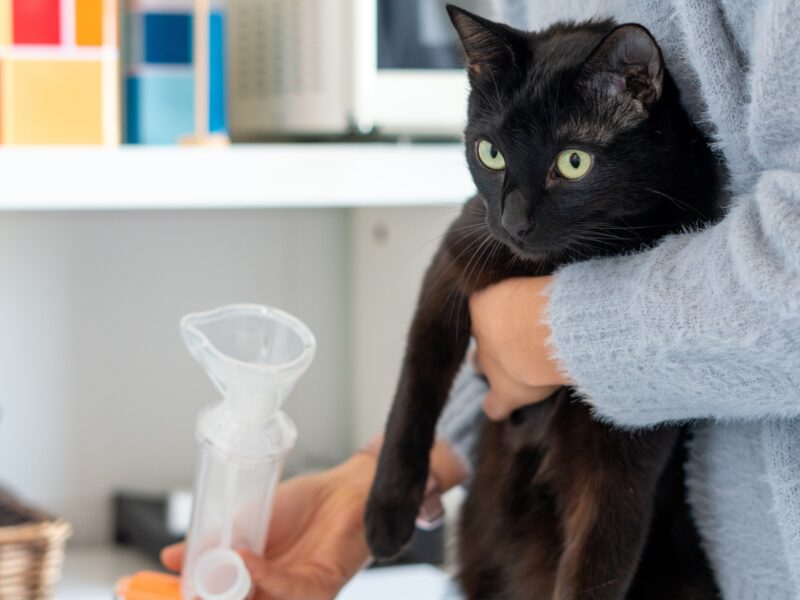Texas A&M, University Of Colorado Research Collaboration Wins Federal Grant To Help Turn Off ‘Breast Cancer Switch’
Researchers at the Texas A&M School of Veterinary Medicine & Biomedical Sciences (VMBS) and the University of Colorado Cancer Center have received a $3.3 million grant from the National Institutes of Health to study how a pair of molecules that regulate certain types of metastatic breast cancer interact with a new drug therapy.
One molecule — semaphorin 7A, or SEMA7A — appears to grant drug therapy resistance to some breast cancers; the other — single-minded two, or SIM2 — helps determine whether SEMA7A is switched on or off.
Over the next five years, the researchers hope to combine knowledge of SEMA7A and SIM2 with a new drug to help women with metastatic cancer receive more effective treatment that will prolong their lives.
How Two Molecules Make The ‘Breast Cancer Switch’

“SEMA7A is a unique gene,” said Dr. Weston Porter, a professor in the VMBS’ Department of Veterinary Physiology & Pharmacology and co-primary investigator on the project. “My colleague at the University of Colorado and lead PI on the grant, Dr. Traci Lyons, discovered that it’s associated with increased metastasis — or cancer spread — especially in postpartum breast cancers, which do not respond to therapy.
“We found that invasive breast cancers are associated with a loss of SIM2, which leads to an increase in the expression of SEMA7A,” he said. “So we started asking whether we could use these molecules to identify patients with metastatic breast cancer and determine the best treatment regimen to use.
“We’ve found that certain cancer drug therapies are less effective when SIM2 is lost and SEMA7A is present. However, we have identified a new drug that we believe can be used instead, and so Dr. Lyons and I are working with Dr. Virginia Borges, a professor of medical oncology at Colorado, to look at patient samples and see how this new drug might be more effective,” he said.
Postpartum breast cancers like the ones affected by SEMA7A and SIM2 are often estrogen receptor positive (ER+) breast cancers, which represent about three-quarters of all breast cancer cases. The name means that the cancer cells have receptors — proteins on the cells — that can respond to estrogen hormones, which tell the cell to grow.
According to Lyons, there are targeted therapies for ER+ breast cancers, yet more than two-thirds of breast cancer deaths are attributed to metastatic ER+ disease, partly because of the therapy resistance promoted by SEMA7A.
“SEMA7A promotes pretty much every hallmark of cancer. It increases cell growth, cell migration, cell invasion, the ability to survive in harsh conditions — such as what a cancer cell will encounter while traveling from one site in the body to the other — and ultimately it promotes metastasis,” she said.
“When SEMA7A is on, it promotes all the things that are advantageous for the tumor and bad for the patient,” she said. “And SIM2s turns it off by preventing SEMA from being made in the first place. So, we’re looking at how we can use the switch to turn SEMA7A off.”
Getting To The Heart Of The Problem
To find out how the two molecules react to the new drug and whether it will be helpful to breast cancer patients, the team will perform laboratory tests to uncover the mechanism behind SEMA7A and SIM2’s interactions in patient samples. Then, they can correlate their findings with data showing how each patient responded to therapy and what the outcome was.
“When someone has ER+ metastatic breast cancer, they are often given a drug that targets one of the mutated proteins caused by the cancer. However, we found that a significant number of women have cancer that isn’t affected by the primary drugs used for this purpose. We wanted to know why,” Porter said.
“What we found when we looked into the details, all the way to the protein level, was that there are actually different variants of this mutated protein, and there are other drugs out there that can target these other variants,” he explained. “The new drug that we’re testing is actually already approved by the FDA for treatment of lymphomas and leukemias, and it can be used for breast cancer treatment.”
The mutated protein targeted by the drug therapies is deeply connected to SEMA7A and SIM2.
“Theoretically, if we can look at a patient’s samples and see their levels for both of these molecules, we would know what kind of treatment that they need much sooner, possibly giving them more time,” Porter said.
Media contact: Jennifer Gauntt, jgauntt@cvm.tamu.edu, 979-862-4216





